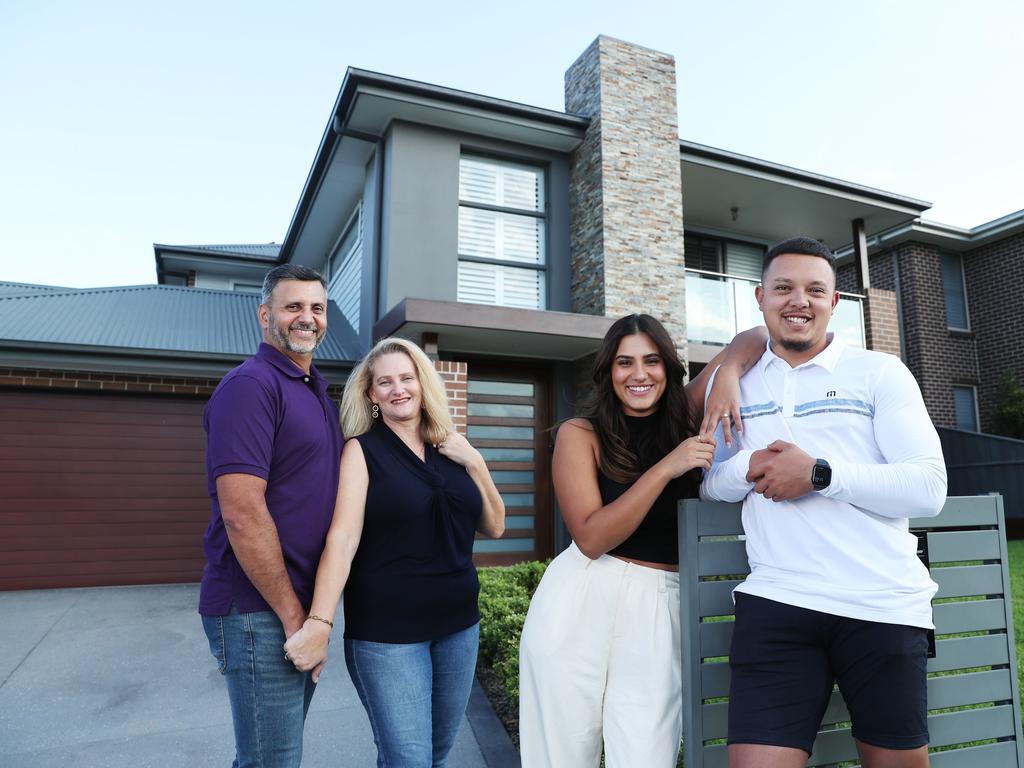First-home buyers forgo big deposits to buy sooner
Gone are the days where first-home buyers saved a fifth of the price of a new home with many taking the riskier route to get into the market sooner before prices rise out of reach.

First-home buyers are no longer saving a fifth of their purchase price as previous generations did, and are instead opting to pay or use government assistance to get in sooner before prices rise out of reach.
Research from Great Southern Bank has revealed that over the past year, the typical first-time homebuyer has climbed on to the property ladder with an average deposit of just 8 per cent of the purchase price.
Property prices have risen 4.12 per cent nationally over the past year, according to housing researcher PropTrack.
Last month, the median house price across Australia’s capital cities hit $1m for the first time, and to make that purchase a buyer would typically be expected to have to save $200,000 before accounting for state stamp duties and other transaction costs.
Australian banks as a rule prefer to lend to a prospective homeowner with a 20 per cent deposit saved. Currently, a median household income of $92,856 would need an estimated 5.7 years to save that amount to buy the median property of $809,000.
Instead, many are choosing to take advantage of the government’s low-deposit Home Guarantee Scheme or pay thousands in lender mortgage insurance.

Melbourne-based mortgage broker Maria McQuillan, director of Concinnate Financial Services, said it was not uncommon for market entrants to borrow 85 per cent to 95 per cent of the purchase price of their new home.
She said that increasingly, only those with parental support who are receiving gifts of $30,000 to more than $100,000, are able to finance a full deposit.
“Mortgage insurance was considered something to avoid,” Ms McQuillan said.
“But as more and more people want to get into the property market, it became accepted to get your foot in the door sooner. Now it’s a home guarantee scheme, it’s gotten easier again.”
Survey research from Great Southern Bank revealed that almost half (46 per cent) of first-time home buyers waited until they had saved more than $100,000 before getting mortgage advice, while one in five had $50,000 put aside, and 13 per cent had squirrelled away $20,000.
The portion of low-deposit buyers is expected to grow with the federal government’s expansion of the Home Guarantee Scheme from January 1, 2026.
The scheme was initially introduced in January 2020 and opened to just 10,000 new buyers each financial year, with income and property price caps to help those on modest incomes into the market. All spots were quickly snapped up in the first few intakes.
While the scheme has expanded and changed over the past five years, the changes make it available to all first-time home buyers regardless of income.
Price limits have been increased to reflect the median house price in each capital city.
Federal Treasury expects take-up to double next financial year to 80,000 guarantees.

AMP chief economist Shane Oliver expressed concern that lower deposits meant higher interest payments over the life of the loan and may expose young people to greater risks of negative equity in a poor market if the price of the home fell below the debt total.
“There’s the broader issue of young people trying to get in and taking on a riskier situation than previous generations did,” Dr Oliver said.
“You could argue that from an intergenerational equity point of view, it’s not very fair. That’s a problem.”
Last financial year, just 0.1 per cent of people using the Home Guarantee Scheme were in arrears, and 1 per cent were accessing hardship support. A further one in five had graduated out of the scheme through selling or refinancing.





To join the conversation, please log in. Don't have an account? Register
Join the conversation, you are commenting as Logout